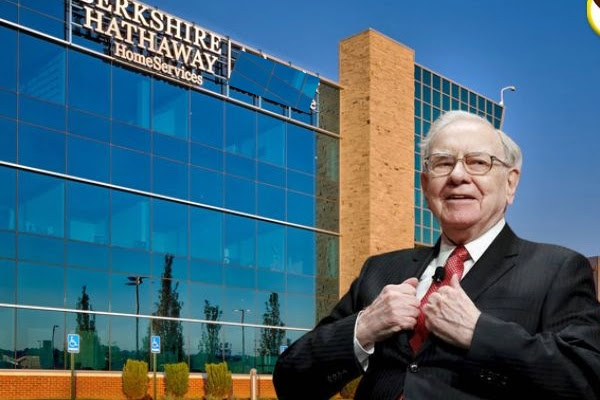Featured
- Get link
- X
- Other Apps
Berkshire Hathaway Inc
A Legacy of Transformation and Investment
Berkshire Hathaway Inc., headquartered in Omaha, Nebraska,
United States, is a testament to the transformative power of visionary
leadership and strategic investment. Originated in 1839 as a textile
manufacturer, the company underwent a remarkable evolution under the guidance
of chairman and CEO Warren Buffett emerging as a multinational conglomerate
with diverse holdings and substantial influence in global markets.
The roots of Berkshire Hathaway can be traced back to the
Valley Falls Company, recognized by Oliver Chace in 1839 as a textile industrial
venture in Valley Falls, Rhode Island. Over the years, the company expanded its
operations through mergers and acquisitions, eventually merging with the
Berkshire Cotton Manufacturing Company in 1929 to form Berkshire Fine Spinning
Associates. This merger marked the beginning of Berkshire's ascent in the
textile industry, setting the stage for future growth and diversification.
Further expansion occurred in 1955 when Berkshire Fine
Spinning Associates merged with the Hathaway Manufacturing Company, founded by
Horatio Hathaway in 1888 in New Bedford, Massachusetts. This merger brought
together two established textile manufacturers and positioned Berkshire
Hathaway as a major player in the industry. However, the textile industry faced
challenges post-World War I, leading to closures and layoffs at several
Berkshire plants.
The turning point for Berkshire Hathaway came in 1962 when
Warren Buffett began buying stock in the company, recognizing its potential for
value investment. Buffett initially intended to profit from a potential tender
offer as Berkshire closed textile mills and freed up capital. However, Buffett
soon realized that the textile business was in decline, prompting him to shift
Berkshire's focus toward other industries.
In 1964, Buffett received a tender offer to sell his stake
in Berkshire Hathaway, but the offer was lower than agreed upon orally. Angered
by the discrepancy, Buffett instead chose to increase his stake in the company
and take control, eventually ousting the existing management and assuming
leadership. This marked the beginning of Buffett's transformation of Berkshire
Hathaway into a diversified conglomerate.
Under Buffett's stewardship, Berkshire Hathaway expanded
into the insurance industry by acquiring the National Indemnity Company in
1967. This move proved pivotal, as insurance became a primary source of capital
for Berkshire's subsequent investments. In particular, acquiring a stake in the
Government Employees Insurance Company (GEICO) in the late 1970s solidified
Berkshire's presence in the insurance market. It provided a steady stream of
revenue for future endeavours.
Despite Berkshire's initial foray into insurance, Buffett
chose to maintain the company's textile operations until 1985, when he finally
decided to shut them down. This decision reflected Buffett's pragmatic investment
approach and willingness to adapt to changing market conditions.
In hindsight, Buffett has admitted that purchasing Berkshire
Hathaway was a mistake regarding missed investment opportunities. Nevertheless,
under his leadership, Berkshire has flourished into a conglomerate with diverse
holdings spanning industries such as confectionery, retail, railroads, home
furnishings, machinery, jewellery, apparel, electrical power, and natural gas
distribution. Notable subsidiaries include auto insurer GEICO, reinsurance firm
Gen Re, and partially owned businesses like Pilot Flying J, Kraft Heinz
Company, American Express, Paramount Global, Bank of America, The Coca-Cola Company,
and Apple.
Berkshire Hathaway's success can be attributed to Buffett
and Munger's adherence to value investing principles, prudent capital
allocation, and long-term perspective. Despite challenges and setbacks,
Berkshire has consistently generated significant returns for its shareholders
and maintained a solid financial position with minimal debt.
In conclusion, Berkshire Hathaway Inc. represents a
remarkable journey of transformation and investment under the leadership of
Warren Buffett and Charlie Munger. From its humble beginnings as a textile
manufacturer to its current status as a diversified conglomerate, Berkshire
Hathaway's story is a testament to the power of vision, resilience, and
strategic decision-making in business and finance. As Berkshire continues to
evolve and adapt to changing market dynamics, its legacy as a beacon of value
investing and corporate stewardship will endure for generations.
- Get link
- X
- Other Apps


.webp)